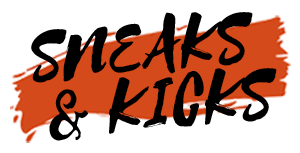Tommy Hilfiger is a trendsetting American brand offering premium clothing, footwear, accessories, fragrances and more. So how did such an internationally successful company go from an initial investment of $150 to a multi-billion dollar company in 36 years? Let’s take a look at the history of the Tommy Hilfiger brand.
The History of Tommy Hilfiger: The Brand’s Evolution
Before the Brand (1950s through 1970s)
The first question we need to answer is: Who is Tommy Hilfiger? Tommy Hilfiger was born on March 24, 1951, in Elmira, New York. He had little interest in education and didn’t follow the typical steps to modern-day success by dropping out of college part of the way through. Instead, his true passion was fashion. He was inspired by the stylistic choices of the then-current celebrities like David Bowie and Mick Jagger.
Hilfiger initially found it difficult to perfect his style and to help his friends find theirs. He would spend his time scouring New York for his favorite fashion pieces or find others that he would sell to his friends. Eventually, he figured that he could combine his love of fashion with the need to make money. At 20, he decided to open his first store, calling it “People’s Place.”
Although it was a daring first move, his lack of experience in business led him to make quite a few mistakes that eventually led to that business’s bankruptcy six years later.
The Founding of Tommy Hilfiger (1980s through 1990s)
Hilfiger wasn’t overly worried about the bankruptcy, deciding to continue working towards his dream. He founded a design team in 1979, calling it “Tommy Hill.” His dreams would soon be realized when he met Mohan Murjani only a couple of years later — an Indian textile magnate who wanted to expand into men’s clothing. With his backing, Hilfiger was able to launch the first iteration of the brand, called Tommy Hilfiger Corporation.
Hilfiger started by launching the brand’s signature menswear collection in 1985. This collection featured classic takes on the preppy style paired with a youthful attitude. It included chinos and button-down shirts. The brand took all kinds of risks that didn’t always work out, but the brand still saw relative success during its first 10 years. Much of this success was due to the fact that it was built on American-grown talent.
In 1989, the Tommy Hilfiger brand left the larger business of Murjani International. This time, they had Silas Chou, a billionaire from the textile industry, to provide them with financial backing. They had also become significant enough to hire former executives of the famous brand Ralph Lauren, including Lawrence Stroll and Joel Horowitz, who helped to push the brand forward over the next decade, forming Tommy Hilfiger, Inc. to give the company a new face to the public.
National Growth and Product Line Development (1990s)
During the 1990s, the brand grew to have a vast national presence. This took place in two halves, between both Tommy Hilfiger Corporation and Tommy Hilfiger, Inc.
For example, Tommy Hilfiger Corporation ended up going public in 1992, giving it further financial backing. In 1995, they licensed Pepe Jeans USA and have since made an enormous reputation built around their jeans line.
The following year, Tommy Hilfiger, Inc. made more of a name when they began selling women’s clothing. They also began to sell fragrances and, later on, household items.
In 1997, Hilfiger combined them both and opened his first store in Beverly Hills, which helped launch his business into the international spotlight.
Of course, a Tommy Hilfiger history wouldn’t be complete without taking notice of the marketing the company did by utilizing the popular music industry of the time. The Tommy Hilfiger brand was the official sponsor for the Psychoderelict Tour for Pete Townshend. As trends changed on the music scene, the brand’s clothes reflected that. The company would go on to sponsor Sheryl Crow, Lenny Kravitz and Britney Spears throughout the 90s.
International Growth of the Brand (2000s to Now)
The brand launched its first store overseas in London in 1998. From that point, they began to spread steadily across other parts of Europe, making more of a name for themselves as an American brand. They effectively marketed themselves as the “classic American cool” brand.
Their sales increased when they introduced women’s intimate apparel in 2001 and fragrances for men and women in 2004. In the mid-2000s, the Tommy Hilfiger brand’s annual revenue had hit $1.8 billion. Shortly after these highs, Tommy Hilfiger decided to sell the entire brand to Apax Partners, a private investment company, which focused more of its efforts on the American fronts and saw distinctive rises in U.S. sales in 2010.
In recent years, the PVH Corporation bought the Tommy Hilfiger brand for $3 billion. They have since debuted digital sales in 2015 and expanded their lines of clothing and accessories to cover a greater range of needs, such as launching a gender-neutral clothing line. These changes have only served to grow the brand and continue its ongoing success.
Tommy Hilfiger Logo History
Many people are curious about the history of the Tommy Hilfiger logo. Simple yet highly aesthetically pleasing, the logo has defined the brand since its first collection in 1985. George Lois, a renowned graphic designer, helped Hilfiger develop the logo and featured it on an enormous billboard in the center of Times Square.
The patriotic color scheme showed off the brand’s American roots, intriguing the American public almost instantly. It became a way for people to define themselves, ultimately resulting in the brand’s global status as a fashion icon.
Wearing Tommy Hilfiger Now
Wearing Tommy Hilfiger is still a way to identify yourself. From shoes to hats and everything in between, it is a classic fashion brand that proudly represents the quality of an American-made product.
Hit up FinishLine.com to shop the latest from Tommy.
The post A History of Tommy Hilfiger appeared first on The Fresh Press by Finish Line.
